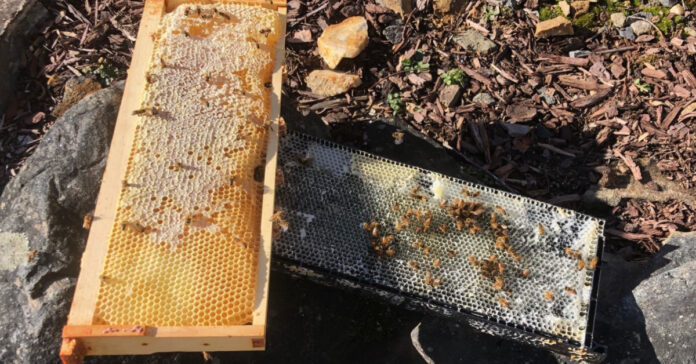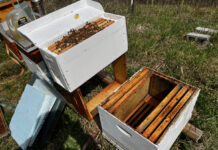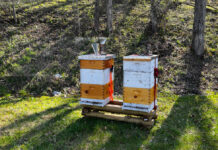When I left the house to walk the dog yesterday morning, I immediately turned back around and took off my shell and dumped it and my gloves in the garage. It was so warm, all I needed was my sweatshirt.
Then I checked the thermometer and realized that while it felt like the fifties it was 43°F. That’s when I knew my body had made that big leap and reset my internal temperature regulator to its winter setting. I’m guessing it occurred right before Christmas, when the bitter wind cut through my pants and wool thermals like they weren’t there. That’s kind of chill is what it takes to convince my body it is winter.
A Warm Day’s Work
After a week of cold, we leaped into action when the temperature rose. We let the upstairs fire go out and cleaned out the ashes. I also cleaned out the chicken coop, a longer, smellier process, which yielded four wheelbarrows full of poopy straw for the compost pile. I have observed that the chickens are smart enough to poop outside their coop whenever possible, but being locked in there for those cold days gave them no choice. As a result, the coop needed to be refreshed. I put down half a bale of straw as new bedding for them. There are only four-and-a-half bales left. I’m losing hope it is enough to last until the next harvest.
A quick check showed that all six beehives had bees flying in and out after the sun warmed the hives. I was pleased they all lived through the subzero temperatures. While there wasn’t much I could do at this late date, I admit to being worried.
I heated one gallon of water and stirred in 16 pounds of sugar. That created two gallons of 2-to-1 sugar syrup which fed the six hives. Besides filling their in-hive feeders, I laid out two frames of honey for them to use for open feeding. The few foragers that were out flocked to it. I’ll keep feeding them until the daytime temperatures remain below 50.
I inspected several or the hives and they had plenty of food stores. One hive had fewer bees than the others, but I am not giving up on it. If five or all six hives survive the winter, I would consider it a victory. If four survive, I will consider it a tie. Anything less will be a loss. I hope this mid-winter feeding will give them a boost, as will the chance to have a cleansing flight.
More Work Tomorrow
A warm day would not be complete without using it as a chance to restock our indoor woodpiles. While the basement fires are lasting longer and using fewer logs to maintain a comfortable temperature, we are still ahead of last year in terms of wood consumption. I have more wood than last year on hand, but it looks like it will be a race to see which lasts longer, the wood or the winter.
I have found that the solid wood logs of our log home heat up and cool down slowly. If this warm spell lasts long enough, the log walls will heat up and we’ll need the fire less and less during the warm days.
Coincidentally, our firewood supplier showed up in the afternoon and left me a nice load of oak and hickory. Unless we get another few weeks of extra cold weather, I won’t be burning this until next year, so it will have plenty of time to season. In a worst-case scenario, I don’t see myself burning it until March or April. Three months of seasoning isn’t as good as nine or ten, but it’s better than nothing.
I started stacking the wood, but as the sun passed behind the mountain, I called it quits. We can stack that wood tomorrow. It’s good looking stuff. I’m tempted to call our supplier back and ask him to bring me a second load.







